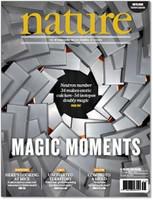 Many questions in understanding the universe remain at the
centre of forefront research; such as how and where the chemical elements in
the universe are created? the life and death of stars, or the nature of stability
(why are some atoms stable and some decay ?), what is the nature of neutrinos? These
questions are intimately related to our fundamental understanding of the atomic
nucleus. Recent progress in theory as well as experimental techniques and
access to rare isotopes are at the very center in getting closer to answering
these questions.
Many questions in understanding the universe remain at the
centre of forefront research; such as how and where the chemical elements in
the universe are created? the life and death of stars, or the nature of stability
(why are some atoms stable and some decay ?), what is the nature of neutrinos? These
questions are intimately related to our fundamental understanding of the atomic
nucleus. Recent progress in theory as well as experimental techniques and
access to rare isotopes are at the very center in getting closer to answering
these questions.
One of the premier facilities for rare isotopes is the ISAC complex at TRIUMF, Vancouver, Canada. The isotopes are produced, often only in minuscule quantities, and with half-lives as short as few milliseconds, hence the name rare. To overcome the research obstacles of rare isotopes and extract information about the atoms and their fundamental interactions dedicated instruments are required. We have developed very sensitive and fast methods using ion trap techniques at TITAN (TRIUMF’s Ion Trap of Atomic and Nuclear science). Ion traps are employed to measure atomic masses, using one single ion in as short as a 1/100 of a second with 10 parts per billion precision, breaking a world-record for precision mass spectroscopy. We were able to do such experiments using a unique combination of traps, including a Paul trap, an electron beam ion trap (to generate highly charged ions), and a set of Penning traps. From the atomic mass, the binding energy of the constituents can be extracted, via E= mc 2 ,which entails all effective forces in the nucleus. One example is to probe into the world of so-called nuclear halos. Teetering on the edge of stability, the properties of halo nuclei have long been recognized as the most stringent test parameters of our understanding of the strong force. In this talk I will report on theses measurements and how they relate to answering the big questions, what we have learned, and where we stand.

